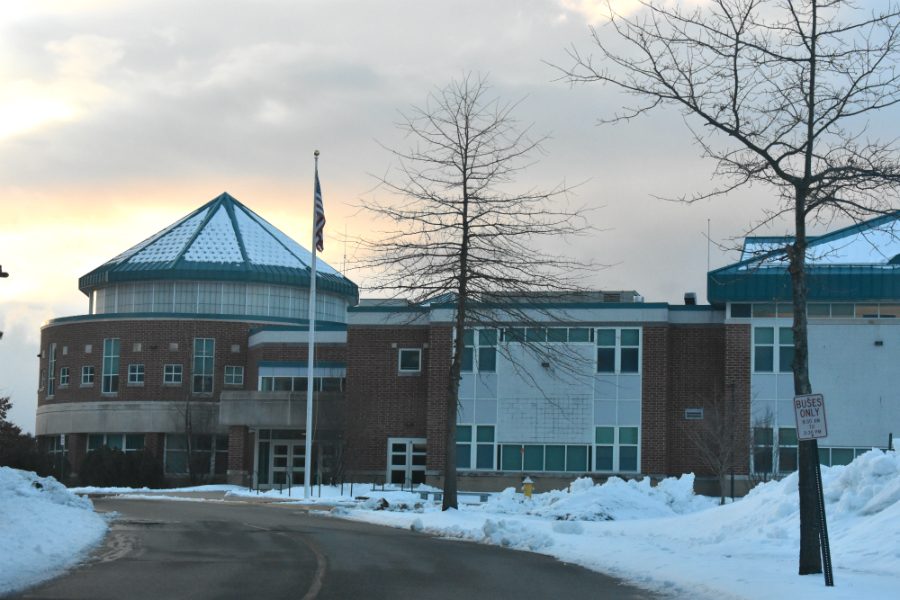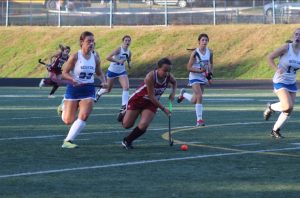At K-5 levels, budget cuts cause friction
February 13, 2019
Superintendent of Schools Everett Olsen proposed budget cuts to the School Committee in January in order to meet a $1.2 million deficit between his requested 3.3% increase and Town Manager Jodi Ross’ allocated 1.6% (not counting the money for teacher salary overrides). Due to decreasing enrollment at the elementary schools and a saturation of students at Westford Academy, the majority of the cuts were made in kindergarten through fifth grade.
Six teaching assistants in the first and second grades will be removed to save $114,000. The Living Lab, a biannual program for students in kindergarten through fifth grade to learn about nature and scientific investigation, will be eliminated to save $22,000. 4 full-time and one half-time Digital Learning Specialists will be replaced by a curriculum coordinator and technician for a net gain of $94,000. Three general education teachers, who had not yet been hired but had been proposed for growth, were removed to save $176,289.
“Quite frankly, a lot of them — whether big or small things like the Living Lab, things my children have benefited from — are all things that kind of contribute to that experience in those very young grades. And so that was what I found concerning; I felt like the K-2 and 3-5 levels, but K-2 especially were taking a really big hit,” School Committee Member Megan Eckroth said.
Reading interventionists retained, teaching assistants and Pre-First removed
The most contested of the proposed cuts, six Reading Interventionists, who help elementary students who are behind on reading to bring them up to curriculum standard, were proposed to be removed to save $132,000. However, at the Feb. 11 School Committee meeting, Olsen stated that Ross planned to allocate an additional $179,000 to the current budget allocation, which would allow for the Reading Interventionists to be reinstated with the remaining money saved for later costs.
Eckroth explains that teaching assistants, Reading Interventionists, and other such support positions have a lasting impact on students, and that taking away that aid may cost more than it yields, making their reinstitution of utmost importance.
“I mean, you’re talking about removing those supports and interventions at a very young age, then you run the risk of those students needing interventions further down the line, which may cost the district more money,” Eckroth said.
“All of the evidence [shows] that there is such a value in that early intervention that pays huge dividends later on,” School Committee member Gloria Miller said.
Other cuts, such as the removal of the Pre-First program, are based on a philosophical shift that has Pre-First enrollment at extremely low levels; for example, the Pre-First class at the Miller elementary school currently only has five students. Due to the district’s commitment to “meeting students where they are,” says Eckroth, she does not foresee the Pre-First program returning even if budget allocations do increase.
Elementary enrollment, class sizes cause concern
General enrollment at the elementary and middle schools is decreasing from the population crest that has swept the Westford Public Schools in recent years. According to Eckroth, none of the classes below 7th grade exceed 400 students, while three of the four classes at Westford Academy exceed 400 students.
As such, many of these cuts are meant to reflect the decreasing student population. However, with the construction of at least 647 units occurring this year in Westford, the town’s largest population growth since the 1980s, the question of whether or not enrollment will actually decrease is up in the air. Miller believes the net population will essentially remain the same in the district.
This projected increase, though, will not be officially recorded until all the incoming families register for school. According to Miller, the Board of Selectmen and Ross did not want to account for growth that was not yet specifically documented through school registration by including teacher hires and programs that would support the growth, making them reluctant to allow budget increases proposed in order to support growth.
The School Committee has directed Olsen to form a Memorandum of Understanding with Ross and the Board of Selectmen. The memorandum is an agreement that states that should the growth be documented and presented, the town will find the funds to make the necessary hires.
At the Feb. 11 School Committee meeting, Eckroth stated that Ross had indicated that there was a “contingency” for the increases covered by the memorandum “depending on growth revenues,” meaning that the budget increase to support growth should not exceed a certain amount.
Olsen stated that this qualifier is not present in the most recent draft of the memorandum. Instead, there is a clause stating that “these [FY20] funds will not carry over into Fiscal 2021, and funding for that year will determine the Fiscal 2021 budget process,” meaning that increases allotted due to growth this fall will not carry over into the future.
Eckroth clarified that this is still a risk for the Westford Public Schools, as growth revenues from the people moving in will not equal the cost of educating more children, and that the school system will continue to be at a deficit in coming years.
The retroactive funding that will be necessary to hire new teachers after, rather than before, the new school year begins is another cause for concern to Miller.
“There’s always going to be some ability to absorb new growth. But with this level of development in town, it does create a much higher degree of uncertainty,” she said.
The Westford Public Schools tend to have a smaller class size than the recommended 25:1 student-to-teacher ratio. While Westford Academy has some large classes, the school district strives to keep a 22:1 ratio at the elementary schools and a 20:1 ratio in kindergarten as well as have support staff, like teaching assistants, at the youngest grades.
Eckroth calls the district’s lower ratios “critical” to what makes the school system unique, and when it comes to the negotiations for new hires, she and Miller emphasize the importance of continuing to maintain small student-to-teacher ratios. The Memorandum of Understanding will allow for new hires if an entirely new classroom is necessary, but no less, and Miller stated it “might be a challenge” to maintain the current student-to-teacher ratio at the lower levels in future years.
With six TAs removed, the class size issue gains even more prominence.
“Let’s say, for argument’s sake, at Miller [Elementary], in the first grade, we have enough [students] move in that the average class size goes from 21 to 23. We can still function and absorb those students without needing to hire an additional teacher […] but we would have lost six TAs at grades 1 and 2 which would greatly alleviate the pressure that that increased class size has on a general classroom teacher,” said Eckroth at the Feb. 11 School Committee meeting.
Olsen said at the Feb. 11 meeting that this issue could be revisited in the fall, when enrollment number are definite.
Overall, Eckroth emphasizes that the school system is the cornerstone of the Westford community.
“I think it’s so important that people understand that the moment our school system starts to decline, our entire town feels the effects of that and we feel it through property values declining, we feel it through the lack of migration of new people want to move to our town, which also affect all kinds of things […]” Eckroth said.







